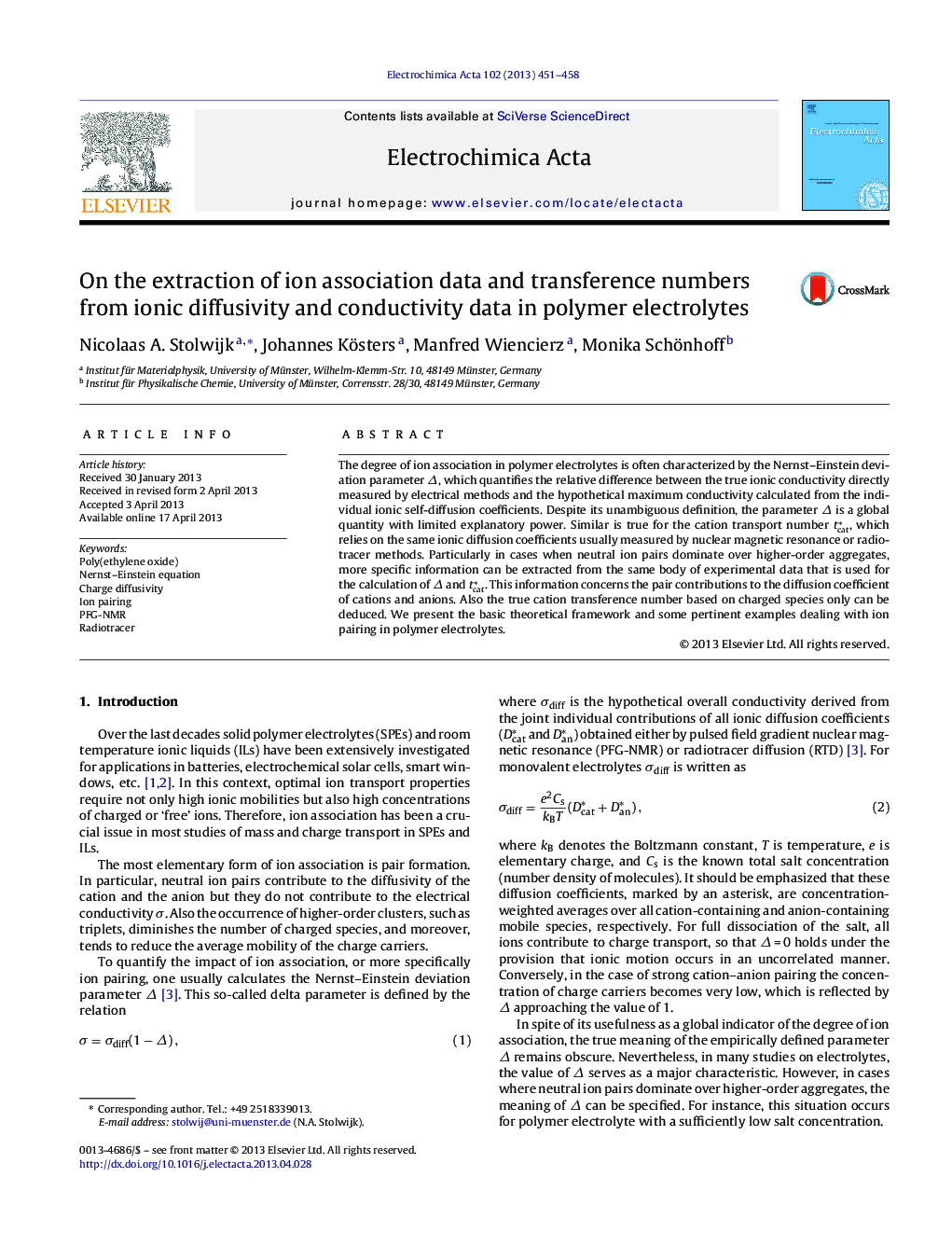| Article ID | Journal | Published Year | Pages | File Type |
|---|---|---|---|---|
| 187307 | Electrochimica Acta | 2013 | 8 Pages |
The degree of ion association in polymer electrolytes is often characterized by the Nernst–Einstein deviation parameter Δ, which quantifies the relative difference between the true ionic conductivity directly measured by electrical methods and the hypothetical maximum conductivity calculated from the individual ionic self-diffusion coefficients. Despite its unambiguous definition, the parameter Δ is a global quantity with limited explanatory power. Similar is true for the cation transport number tcat*, which relies on the same ionic diffusion coefficients usually measured by nuclear magnetic resonance or radiotracer methods. Particularly in cases when neutral ion pairs dominate over higher-order aggregates, more specific information can be extracted from the same body of experimental data that is used for the calculation of Δ and tcat*. This information concerns the pair contributions to the diffusion coefficient of cations and anions. Also the true cation transference number based on charged species only can be deduced. We present the basic theoretical framework and some pertinent examples dealing with ion pairing in polymer electrolytes.
